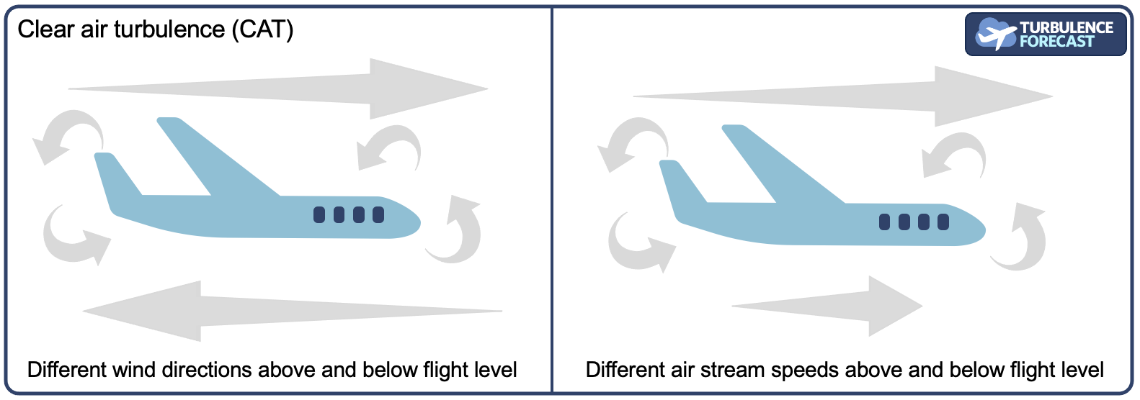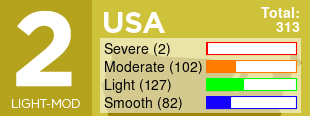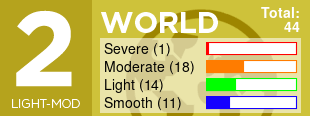Are you an Android developer and love the site? Contact us
updated (Apr 14, 2024)

(c) Turbulence Forecast 2023
What is clear air turbulence (CAT)?
Updated November 14, 2023
We often connect the idea of turbulence to something we can see, such as clouds or thunderstorms. Clear air turbulence, or CAT, is the occurrence of sudden turbulence without the presence of those visual indicators. It’s caused by the meeting of two air masses that travel at widely different speeds, such as jet streams and fronts, and usually occurs in medium to high altitudes between 23K and 40k feet. While some types of clouds, such as thin cirrus clouds or ice clouds, can be indicators of possible CAT, the turbulence itself is not visible to human eyes or conventional radar.
There are several weather phenomena that can cause clear air turbulence, and pilots and weather forecasters can use the ability to detect these other weather conditions to predict the likelihood of encountering unexpected bumps. Expert weather forecasters also study cloud formations from satellite and other observational methods to predict potential areas of CAT. Still, not all occurrences of CAT are predictable. Sometimes rough air occurs without warning. That’s why you will generally hear the advice to keep your seatbelt fastened even if the air is currently smooth. Planes are built to withstand severe turbulence, but people’s heads are not, so getting injured during unexpected turbulence does happen, especially if someone is standing or walking around. Fortunately, injuries are exceedingly rare.
The most common reasons for CAT, alone or in combination, are:
- Horizontal or vertical wind shear due to the proximity to a jet stream, front, or trough
- Strong vortex winds around an area of high atmospheric pressure
- Temperature inversions and mountain waves
When a flight encounters strong clear air turbulence, it can feel as if there are “pockets” of air in which the plane makes unexpected, sometimes strong, jerky movements, or bumps up and down or sideways. To get back to smooth air, pilots perform actions based on where the encounter with turbulence occurs, for example near a front, and depending on other flight conditions. Pilots will first make sure the plane is at the recommended speed for the intensity of the turbulence, which in some cases means slowing down. When the plane is in or near a jet stream, pilots will change altitude or heading to get out of the turbulent air. Pilots also watch outside temperatures and wind directions to decide which altitudes to move towards or how to change the flight path to get away from the rough air. Pilots will also usually issue a PIREP (pilot report) to inform flight planners and other planes in route on the altitude and severity of the turbulence, so that they might avoid it altogether.
In nearly all cases, pilots will quickly maneuver to exit areas of clear air turbulence. While it might seem unexpected and startling for passengers, pilots are always on the lookout and prepared to handle CAT as they encounter it.


